The National Museums in Scotland has a watch, or the remains of a watch, that was recovered from a mid 17th century wreck. The watch was corroded and heavily encrusted, but a conventional x-ray revealed that though the steel components had turned to dust, the brass wheels remained
| Watch as Discovered |
 |
Sadly the only image of the plain x-ray I can find is embedded in the original article in The International Journal of Nautical Archaeology. and not easily posted. Based on that image, and the work that was done to elucidate the function of the Antikythera Mechanism, the researchers decided to use a CAT scan. The following images are all from that scan, they reveal details as small as the groove on the fusee cone, the contrite wheel and even the makers signature engraved onto the top plate.
| The back of the watch, with the verge escapement wheel in the foreground. The two large wheels in the back are the mainspring barrel and the fusee cone. The watch is upright in all the pictures |
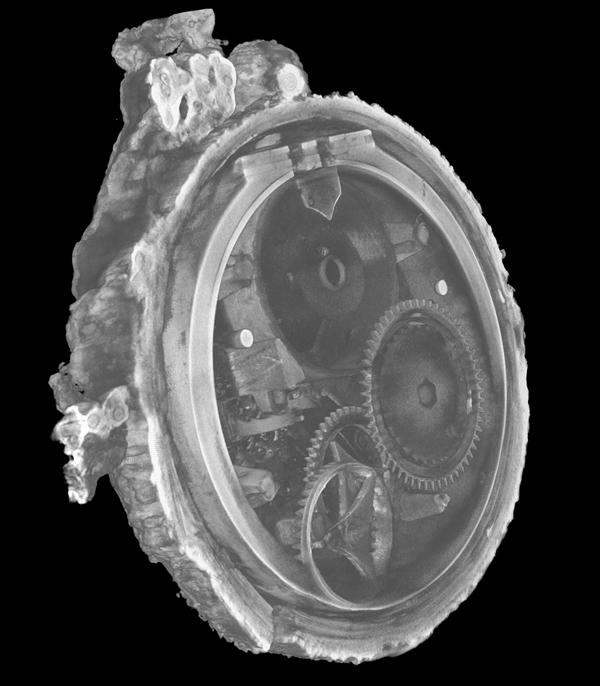 |
| Dial of the watch. The wheel at the bottom left is the contrite wheel that rotates the plane of motion from the vertical of the verge escapement to the horizontal of the rest of the train. |
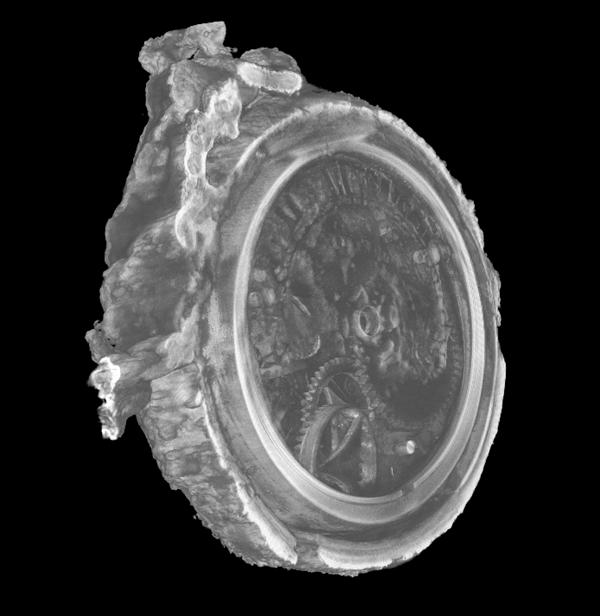 |
| The back of the watch, showing the conical fusee wheel and the long groove that would have held a chain to transmit power from the mainspring to the rest of the movement. At the far left are 2 of the pillars that supported the top plate, in cross-section. |
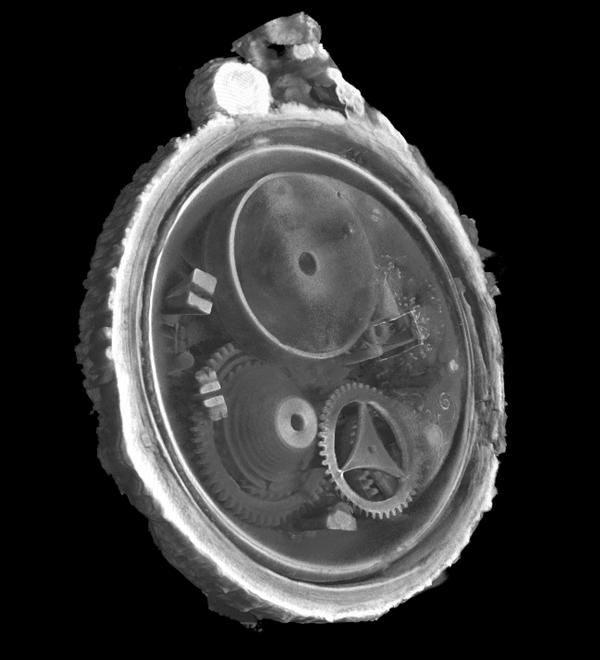 |
| The top of the movement, or the back of the watch, At right is the opening for the balance staff, long rusted away, and at bottom the signature of the maker is still legible. |
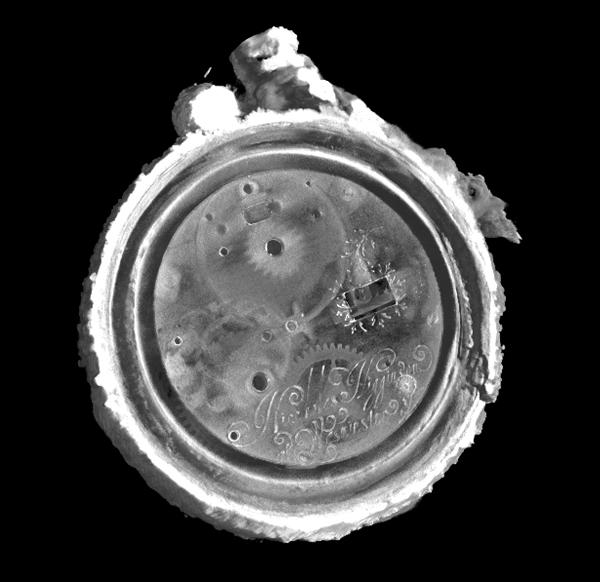 |
All images from Nature
I have some rough photos of a similar pocketwatch, to give an idea of what this would have looked like pre-soaking. This piece is approximately 70 years more recent, but British watch design was VERY conservative, both aesthetically as well as technically, they were still making key-wound fusee pieces in the 20th century.
(source)
A



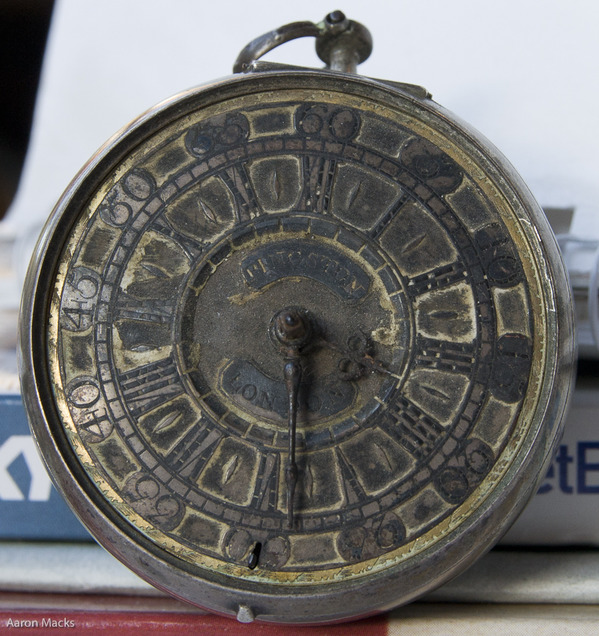
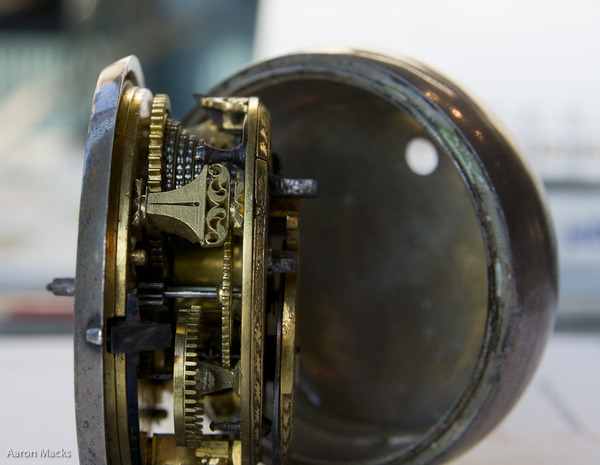
Leave a comment